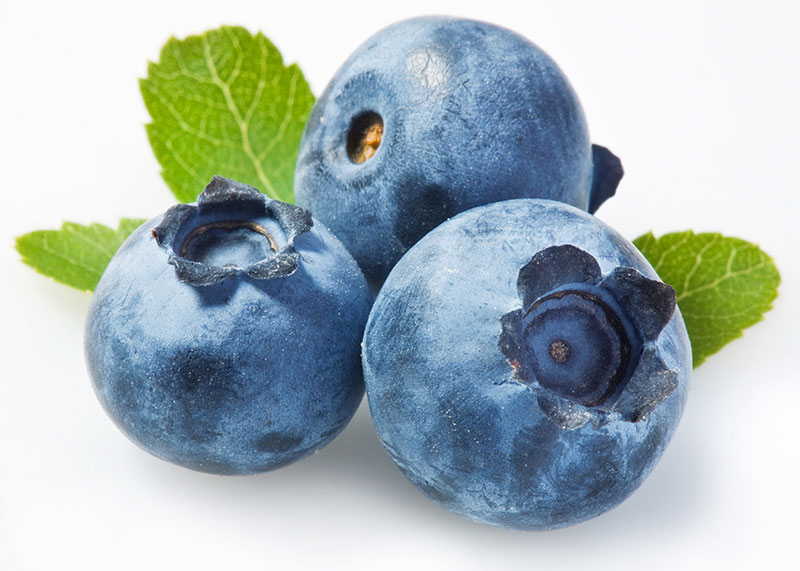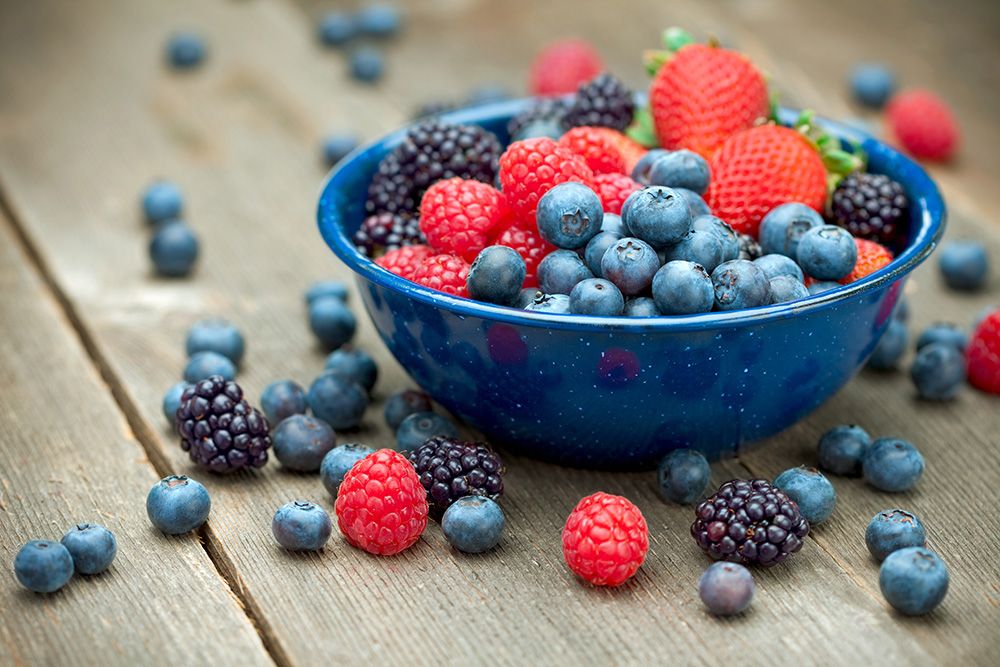Berries, Blueberry

Availability:
Year-round
Availability:
| J | F | M | A | M | J | J | A | S | O | N | D |
Notice:
on demand
Receiving/Storage:
Receiving Information: Good quality blueberries should be firm, plump, and dry. They should be deep purple or blue-black in color with a silvery sheen or ñbloomî. Blueberries do not ripen after harvest; discard any green berries. Shriveling„blueberries may lose moisture and shrivel if they are stored in an area with low humidity. Tough textured skin„exposing blueberries to high temperatures may cause skin texture to toughen.
Storage/Handling: Temperature/humidity recommendation for short-term storage of 7 days or less: 32-36 degrees F / 0 _ 2 degrees C. 90 _ 98% relative humidity. Store blueberry containers in a single layer in a well ventilated area.
Description:
Plump, juicy berries with a deep purple to blue-black skin color highlighted by a silvery sheen called ñbloomî. Blueberries are one of North AmericaÍs indigenous fruit crops, long cherished by native peoples. Early explorers including Champlain and Lewis and Clark encountered a variety of uses by various Indian tribes as an important part of their diet and lifestyle _ fresh, dried and powdered. For early colonists, blueberries were probably one of the first familiar foods discovered on the North American continent, since they were very similar to other berry varieties found in Europe. Their abundance, natural sweetness and versatility made them an immediately welcome addition at a time when fresh food was in short supply, and sugar was scarce and expensive. Blueberries were canned and shipped to Union troops during the Civil War in the 1860s.


